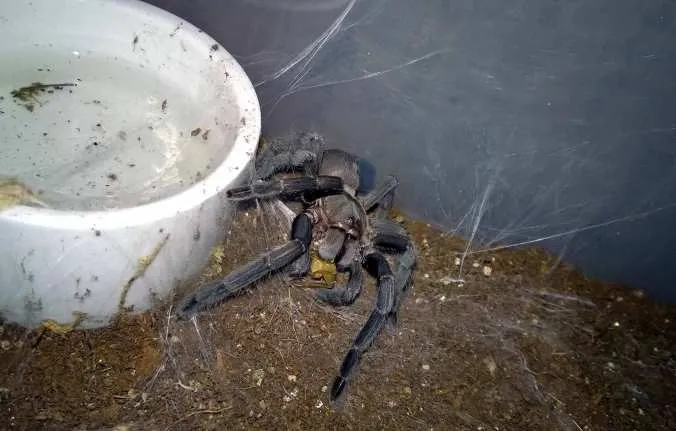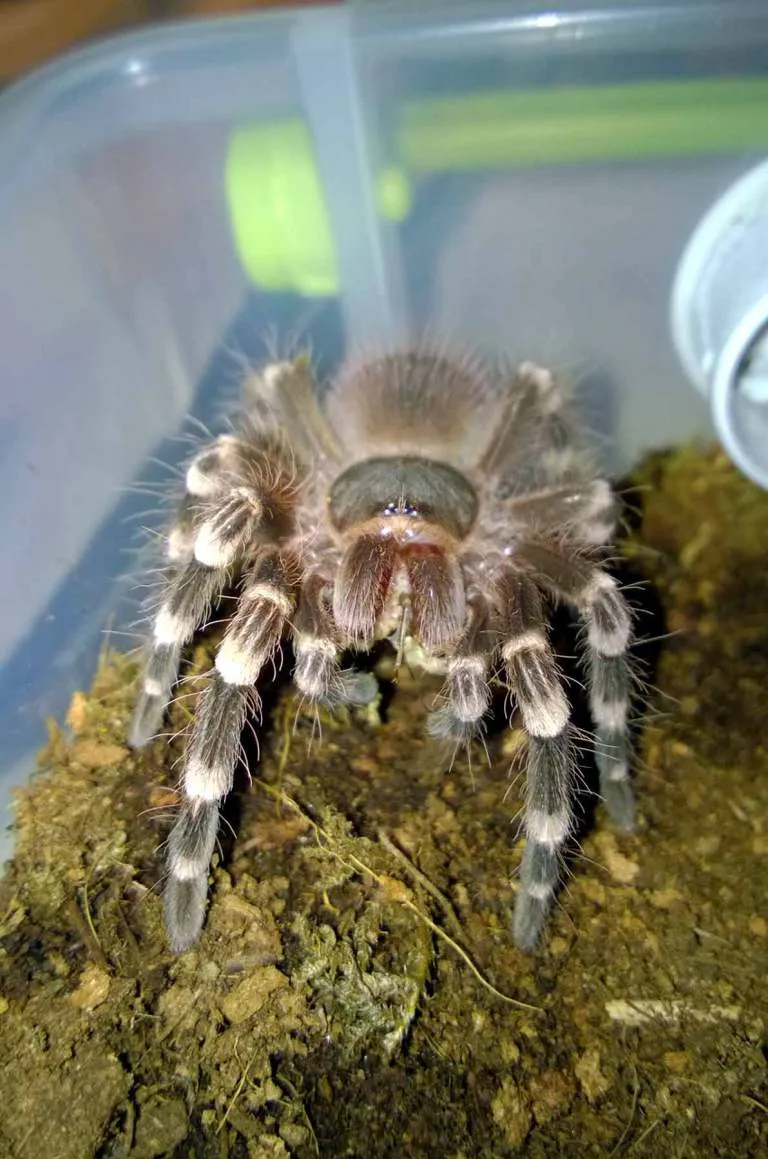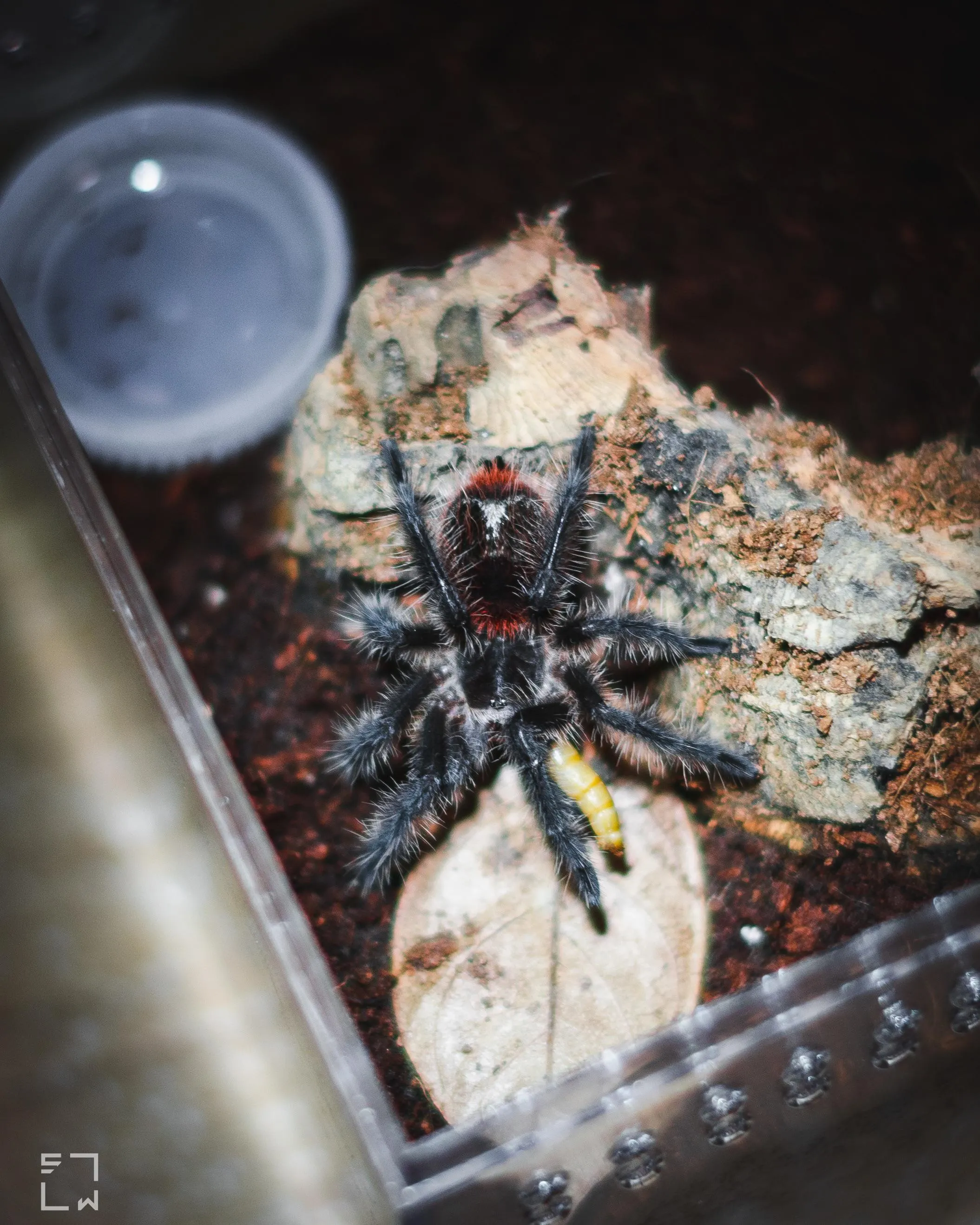Feeding a tarantula might seem straightforward, but understanding the right approach is crucial for your pet’s health and longevity. This comprehensive guide will walk you through the essentials of tarantula feeding, ensuring you provide the optimal nutrition and care for your eight-legged companion. From the best food choices to feeding frequency and recognizing signs of a healthy tarantula, you’ll find all the information you need to become a knowledgeable and responsible tarantula owner. Proper feeding is a cornerstone of tarantula care, directly impacting their growth, molting cycles, and overall well-being.
What Do Tarantulas Eat?
Tarantulas are primarily insectivores, meaning their natural diet consists mainly of insects. In the wild, they feed on a variety of invertebrates, including insects, spiders, and occasionally small vertebrates. However, when kept in captivity, the key is to provide a balanced and readily available diet that mimics their natural feeding habits. The types of food you offer will significantly impact your tarantula’s health, growth, and longevity. Therefore, choosing the right food items is essential for their well-being.
Insects
Insects form the core of a tarantula’s diet. They offer the necessary proteins, fats, and other nutrients tarantulas need to thrive. The insects you select should be appropriately sized for your tarantula, as tarantulas can be hesitant or unable to consume prey that is too large. The insects must also be healthy and free from pesticides or diseases, as these can be harmful to your pet. Regularly dusting the insects with calcium and vitamin supplements can further improve their nutritional value, especially for growing tarantulas.
Feeder Insects: The Best Choices

Choosing the right feeder insects is vital. Several options are widely available and offer a good nutritional profile. When selecting feeder insects, consider factors such as ease of care, nutritional value, and availability. It is usually best to source feeder insects from a reputable supplier to ensure their health and quality. Also, consider the amount of space you have to maintain the feeder insects, as some species require more space and maintenance than others.
Crickets
Crickets are a classic feeder insect and readily available. They are relatively easy to keep, making them a convenient option. Crickets can be dusted with supplements to enhance their nutritional value. However, they can be noisy and may escape from their enclosure. Be sure to provide fresh food and water for the crickets to keep them healthy and nutritious. They also need to be sized appropriately for the tarantula, as too large of a cricket can injure the tarantula.
Mealworms
Mealworms are another common feeder option. They are easy to store and require minimal care. Mealworms are less noisy than crickets, but they have a higher fat content. This can be a concern if overfed, so they should be offered in moderation. They are also slow-moving, making them an easy target for your tarantula. Mealworms are a good choice for smaller tarantulas or as a supplement to other food sources. Keep in mind that their hard exoskeletons can sometimes be difficult for tarantulas to digest.
Dubia Roaches

Dubia roaches are considered an excellent feeder insect. They are highly nutritious, contain a good balance of protein and fat, and are relatively easy to breed and maintain. Dubia roaches cannot climb smooth surfaces, which makes them easy to contain. They are also quiet and odorless. Compared to crickets, they are generally healthier and are preferred by many tarantula keepers. However, they are illegal in some areas, so check local regulations before acquiring them.
Other Foods
While insects are the mainstay, other food items can be occasionally offered. Supplementing the diet with other options can provide different nutrients. Be careful when offering anything other than insects, and never introduce prey that could harm your tarantula.
Pinky Mice
Pinky mice (baby mice) can be offered to larger tarantulas. They are high in protein and offer a change from insects. However, pinky mice should be offered sparingly, as they are high in fat and can lead to obesity. They are also harder for tarantulas to digest. Always offer pre-killed pinky mice to avoid any risk of injury to your tarantula. It is always best to monitor your tarantula after feeding and remove any uneaten prey within a reasonable timeframe.
Pre-killed Prey Only

Always offer pre-killed prey to your tarantula. Live prey can injure or even kill a tarantula, especially during molting. Pre-killed insects or pinky mice are readily available and eliminate the risk of injury. Ensure the prey is freshly killed and has not been exposed to any chemicals or pesticides. The tarantula is less likely to eat if the prey is not fresh. This also ensures the tarantula doesn’t get sick or get injured from the prey.
How Often to Feed Your Tarantula
The frequency of feeding depends on the tarantula’s size, species, and age. Overfeeding can lead to health problems, while underfeeding can stunt growth or cause stress. A good understanding of your tarantula’s specific needs is essential. Regular observation can help you determine the right feeding schedule for your pet. Young, growing tarantulas require more frequent feeding than adults. Adjust the feeding schedule as the tarantula matures.
Feeding Frequency by Tarantula Size
Spiderlings (young tarantulas) should be fed more frequently, typically 2-3 times per week. This is because they are actively growing and need more nutrition. As tarantulas grow larger, the feeding frequency can be reduced. Juvenile tarantulas can be fed once or twice a week. Adult tarantulas typically need feeding only once every 1-2 weeks, sometimes even less. Always adjust the frequency based on the tarantula’s body condition and appetite. A well-fed tarantula will have a plump abdomen.
Feeding Frequency by Tarantula Species

Different tarantula species have varying metabolisms and activity levels, which influence their feeding needs. Fast-growing species like some of the terrestrial ones may require more frequent feeding. Slower-growing species, or those with lower metabolisms, may need less frequent feeding. Research the specific needs of your tarantula species to determine the ideal feeding schedule. Some species are known to be more voracious eaters than others, and their feeding habits will reflect this.
How to Feed Your Tarantula
The method of feeding is as important as what and how often you feed. Proper technique ensures the safety of both you and your tarantula and encourages a healthy feeding response. Never handle your tarantula during feeding, as this can lead to stress or accidental bites. Instead, use long tongs to present the prey. Observe the tarantula’s behavior to determine if it is hungry and ready to eat. Also, note that some tarantulas are more active feeders than others, and their feeding response may vary.
Removing Uneaten Food
Uneaten prey should be removed within 24 hours to prevent stress on the tarantula and to avoid the growth of mold or mites. Leaving uneaten prey can also stress the tarantula, as it may feel threatened. The presence of uneaten insects can also be a sign that your tarantula is about to molt. Use tongs to remove uneaten insects, or gently nudge them toward the entrance of their enclosure. Regular cleaning is crucial to maintain a healthy environment for your tarantula.
Water and Hydration

Providing fresh water is essential for a tarantula’s survival. Ensure a shallow water dish is always available, and refill it regularly. Many tarantulas also get their hydration from the moisture in their food. Misting the enclosure lightly can help maintain humidity levels, especially for species that require it. A hydrated tarantula is a healthy tarantula, and it will show in its overall activity level and appearance. Providing fresh water is as crucial as providing food.
Signs of a Healthy Tarantula
Observing your tarantula’s behavior and appearance can tell you a lot about its health. A healthy tarantula is active, alert, and has a plump abdomen. It should readily eat when offered food and show a good feeding response. Regular inspections of your tarantula can help you identify any potential problems early on. Keeping a log of feeding and molting cycles can also help you monitor your tarantula’s health and well-being.
Signs of a Tarantula Preparing to Molt
Tarantulas molt to grow, and this process requires specific care. A tarantula preparing to molt may refuse food, become less active, and may seal itself in its burrow. Their abdomen may appear dark and swollen. It is crucial to maintain high humidity levels during the molting process. Do not disturb the tarantula during this time. After molting, the tarantula’s exoskeleton will be soft, and it will need time to harden. Do not offer food until their fangs have hardened.
Common Feeding Mistakes

Making mistakes in tarantula feeding is easy, particularly for beginners. Some common errors can negatively impact a tarantula’s health and well-being. Understanding these mistakes and how to avoid them is crucial for responsible tarantula ownership. Recognizing and avoiding these mistakes will ensure your pet thrives. Many problems can be avoided with proper knowledge and attention to detail.
Overfeeding
Overfeeding is one of the most common mistakes. It can lead to obesity, which shortens a tarantula’s lifespan. Overfed tarantulas may have difficulty molting, and their overall activity may decrease. It can also lead to other health problems. It is important to feed your tarantula according to its size, age, and species-specific needs. Always observe your tarantula’s body condition. A well-fed tarantula will have a plump abdomen, but it should not be excessively large.
Underfeeding
Underfeeding can stunt growth and cause stress. If a tarantula does not receive enough nutrition, it may fail to grow properly or have difficulty molting. It may also become less active and display a poor appetite. Regularly assess your tarantula’s body condition and feeding response. Adjust the feeding frequency and the size of the prey accordingly. Observe the tarantula carefully. A tarantula that refuses to eat consistently may need more attention.
Handling During Feeding
Handling a tarantula during feeding can cause stress and potentially lead to bites. It is always best to use long tongs to present the prey. Handling can also disrupt the feeding process, causing the tarantula to lose interest in the food. Always respect the tarantula’s space and avoid handling it unless necessary. If you need to move a tarantula, it is best to coax it into a container rather than handling it directly. Tarantulas are delicate creatures, and any unnecessary stress should be avoided.
Conclusion
Feeding your tarantula is a crucial part of responsible pet ownership. Understanding the right food choices, feeding frequency, and how to recognize signs of a healthy tarantula will ensure your pet thrives. Following the guidelines in this guide will help you provide the best possible care for your tarantula and enjoy the rewarding experience of keeping these fascinating creatures. By providing a balanced diet, suitable enclosure, and attentive care, you can look forward to watching your tarantula live a long and healthy life.
